The government maintains that the Twin Towers were each hit by aircraft and the subsequent fires weakened the steel in the upper stories, initiating a gravity-driven "pancake collapse," as illustrated in Figure 30. There are many problems with this hypothesis. The most obvious problem with it is the near free-fall speed of the destruction of these buildings (see Billiard Balls). A second problem is the paucity of remaining material. Where are the concrete floors? Where is the office furniture? Where is the office machinery? Where are the filing cabinets? Where is the wall board? Where are the bookcases? They were not there, so most of it appears to have turned to dust, as illustrated in Figure 31.
 |
| Figure 32. Mostly unburned paper mixes with the top half of the Twin Towers. As seen a block away, a large portion of the towers remains suspended in air. This dust looks deeper than one inch. Most of the curb looks filled in. Source: Terry Schmidt |
It was widely reported that a substantial amount of WTC steel was sold as scrap, put on barges, and shipped to China to be melted down. But Figure 33 shows how little steel was on the ground shortly after destruction of the WTC towers. There is evidence that steel was transported to Fresh Kills Island to be stored. This steel may or may not have been subsequently shipped to China. But it could not be a large amount of steel.
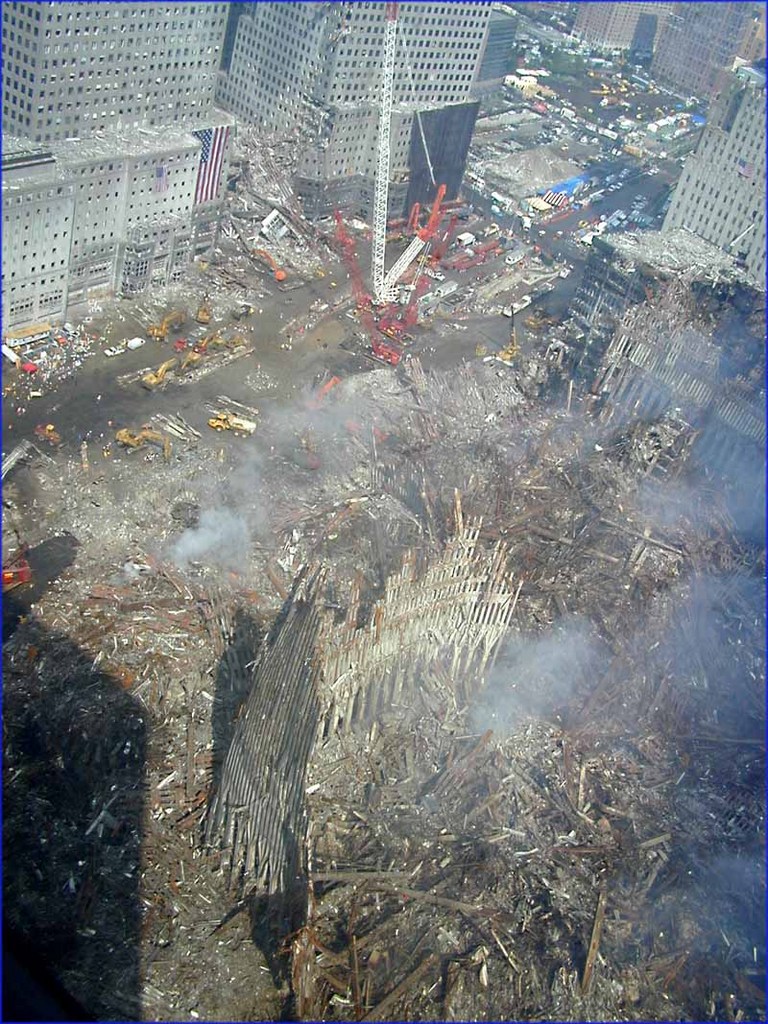 |
| Figure 33. The remains of WTC2 are in the foreground. Immediately behind WTC2 is where WTC3 (Marriott Hotel) once stood. Where did it go? In the background (upper-left) the World Financial Center (WFC) buildings have blown-out windows and other damage. The remains of WTC6, an 8-story building, towers over the remains of WTC1. Source |
This photo is dated 9-13-2001. The sun is from the east (right side of picture), so it appears this was taken on the morning of 9/13. While it has been reported that much of the steel was removed from the site, sold to China, and loaded onto barges, and sent to China to be melted down, the steel could not have been removed this fast. So, if it was not shipped to China overnight, where did the steel go? Most of it was not on the ground, initially; so it had to have been suspended in the air.
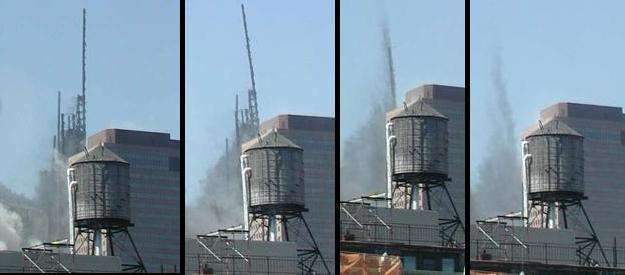 |
| Figure 36. Steel columns disintegrate into steel dust with WTC7 and water tower in the foreground. Source |
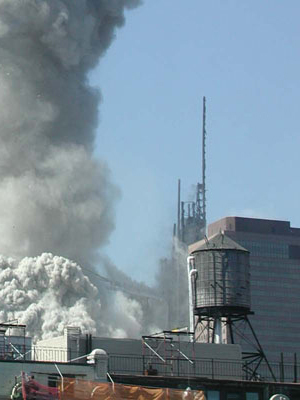 | 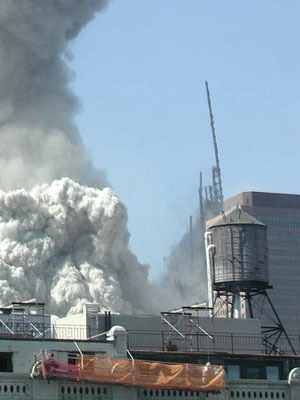 | 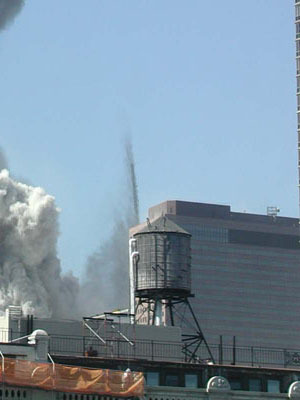 | 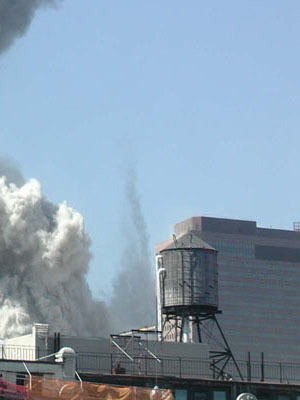 | 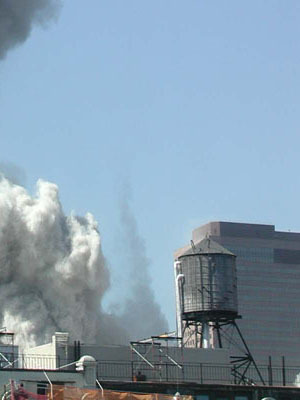 |
| Figure 37. The same steel-dust phenomenon from another source and perspective. Source, | ||||
| Figure 38(a). A video clip of steel turning to steel dust. (gif) Source | Figure 38(b). Another video of steel turning to steel dust, although CNN’s Aaron Brown calls it smoke. (avi)(mpg) Source | Figure 38(c). (gif) People run by as steel "wheatchex" turn to dust and the building turn to dust. This is not science fiction. (terrorize.dk) Source |
| Figure 39. "In the current compilation we can see from CNN a video clip of steel turning to steel dust. CNN's Aaron Brown calls it 'smoke.' ...Finally you can see more NASA shots of the 911 WTC taken from the PBS - American Experience documentary "New York Center of the World." Episode 8. The final comment is that of Paul Goldberger, an architecture critic." URL Thanks for Video by chrisbornag |
| Figure 40(a) (same as Figure 28). The tower is being peeled downward. Dark explosions shoot up, while white ones explode outward. Above the white explosions the building has vanished while the lower part awaits termination. Source | Figure 40(b). The building appears to be dissolving into powder. We don't we see any solid parts of a falling building, here. Source |
Figures 40(a) and 40(b) show WTC2 dissolving into powder. An interesting detail is what appear to be "bullet holes," with dense perimeters, distributed throughout the dust cloud. These bullet holes seem to be at the origin of the rapidly-expanding dust cloud.
(other examples)
(other examples)
| Figure 315(a). One of Bill Biggart's last pictures, perhaps his next to last picture. Source |
| Figure 315(b). Bill Biggart's last picture. |
| Figure 315. WTC3 was partly destroyed in bizarre fashion during the destruction of WTC2. (Special thanks to Bill Biggart for this very valuable piece of the puzzle.) Source |
| Figure 55(b). WTC3 was reduced to this 3-4 story high if narrow debris stack. A lower section of WTC1's west wall lays across the West Side Highway. (9/13/01) Source |
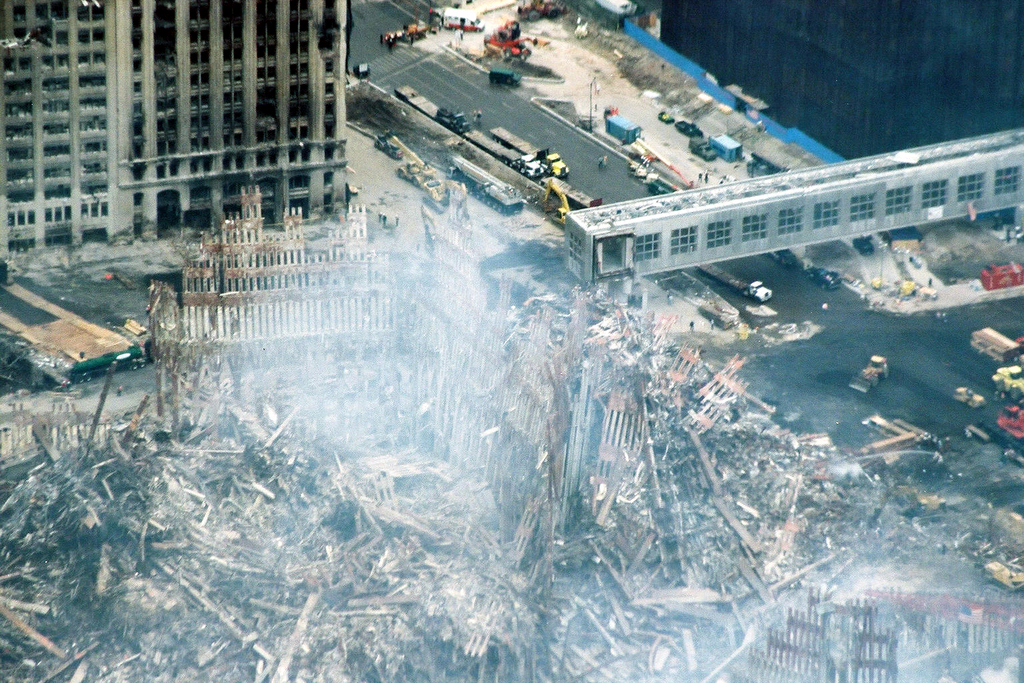 |
| Figure 313. Most of WTC3 disappeared during the destruction of WTC1. The pedestrian walkway over the West Side Highway was connected to something that is no longer there. The remains of WTC2 can be seen near the center of the photo and the remains of WTC1 are partly visible in the lower right corner. (9/27/01) Source |
"Building vapor" wafts up from the WTC1 and WTC2 "piles." Where is it coming from? It resembles steam off of a manure pile. It does not seem to originate from a single point, but rises over a wide zone, like a haze in a fairly uniform fashion.
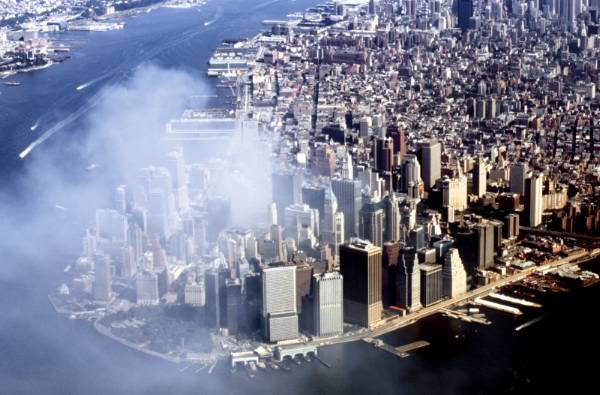 |
| Figure 41a. "Fumes" from the site were visible for days. Source |
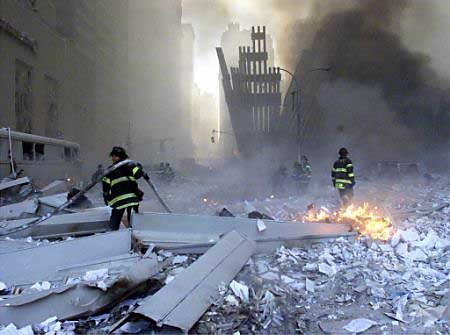 |
| Figure 41b. Aluminum cladding and paper lay in the street, but where is the steel? And why isn't more of the paper on fire? It won't be on fire for long if that fireman gets his fire hose working. Why is it only paper that survived and not office furniture and equipment? Most of this paper must have been in steel filing cabinets and bookshelves. Source: (Reuters) |
The twin towers together had an estimated 30,000 computers for nearly 50,000 workers. So, 45,000 filing cabinets would not be an unreasonable estimate. It is reported that 200 complete bodies were recovered out of the nearly 3,000 victims, which is about 1/15th. At the same ratio, we would expect 3,000 complete filing cabinets of the 45,000 should have survived intact. Yet only one shrunken filing cabinet was reportedly found (see figure 94, StarWarsBeam page 6).
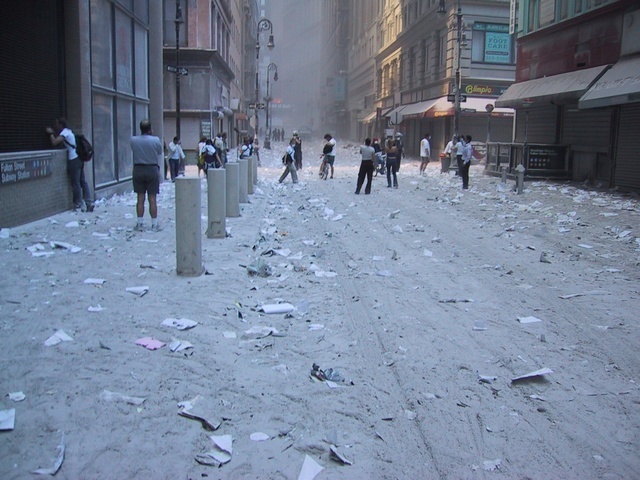 | 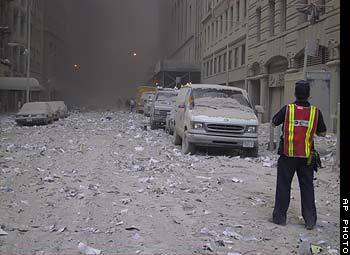 |
| Figure 42. Mostly unburned paper mixes with the (former) top half of the Twin Towers. As seen a block away, a large portion of the towers remain suspended in air. This dust looks deeper than one inch. Most of the curb looks filled in. Source: Terry Schmidt | Figure 43. It's a pretty dark place! Source |
 | 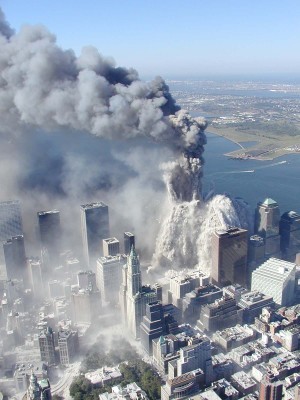 |
| Figure 44. WTC1 smoke obscures WTC 2 destruction. It's like a total eclipse of the sun. Source | Figure 45. Does this look more like a pancake collapse, a volcano, or a dust fountain "bubbler"? Source |
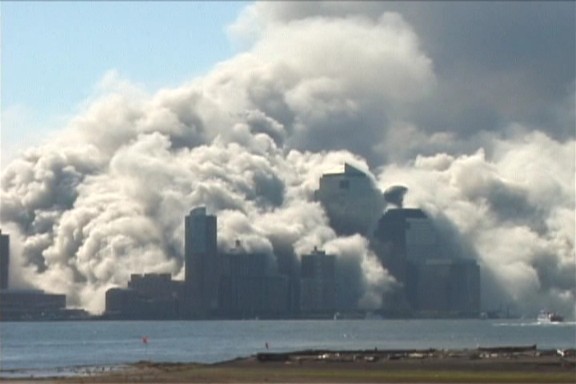 |
Figure 02. The destruction of WTC2 envelops lower Manhattan in a blizzard of ultra-fine dust. Source |
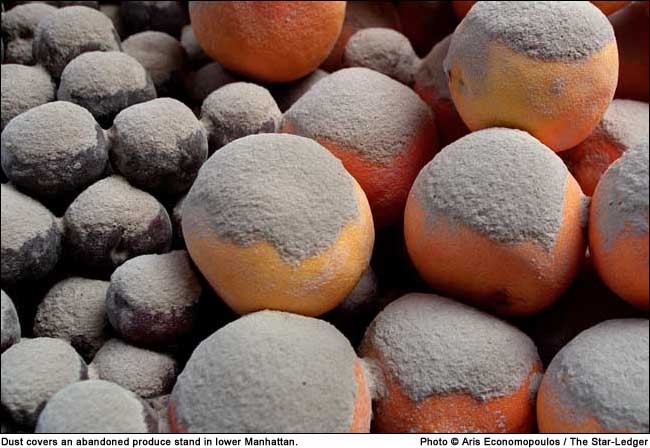 |
| Figure fruit. Dust covers an abandoned produce stand in lower Manhattan. Source |
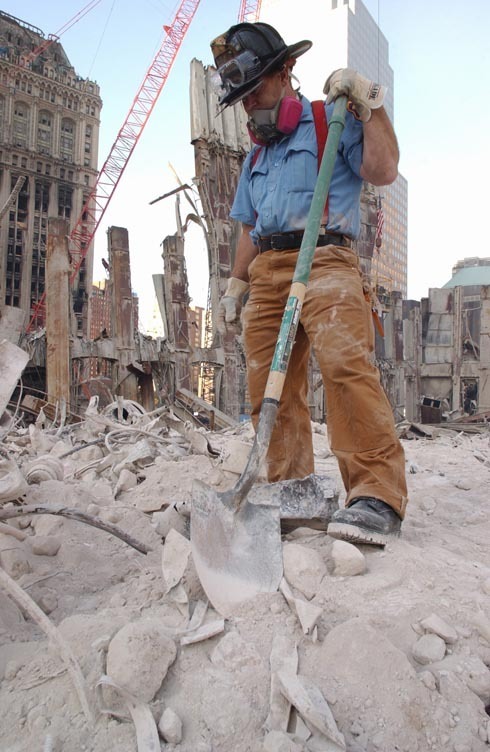 | 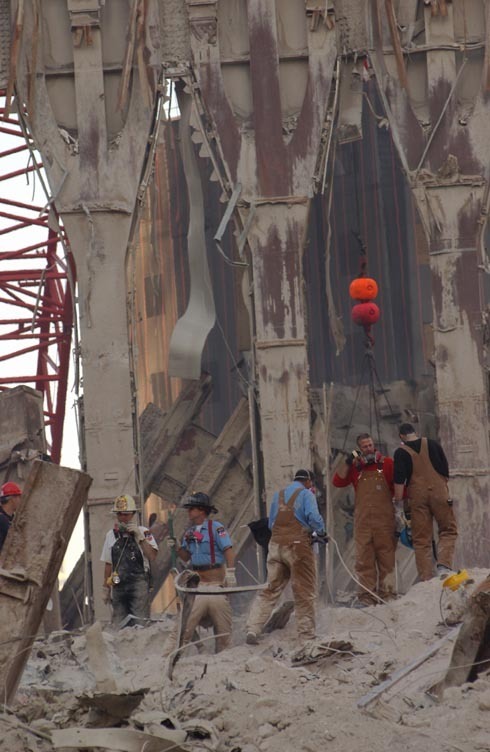 |
| Figure 46. Scooping up the building. Source | Figure 47. GZ workers walk in thick dust atop the rubble pile, hardly higher than the lobby level. Source |
| Figure 50. Ground-level view of the enormous quantity of dust wafting skyward. Conventional demolition dust does not do this. Source: | |
| Figure 49. Satellite, color-coded image shows the enormous quantity of dust from the WTC destruction. Source | Figure 51. This is a photograph taken from the International Space Station (at 10:30 AM on 9/11/01 according to the source). We believe it was taken on 9/12/01 and will update this when this information is verified. Source: (Note: This photo may be correct, but we are currently questioning the authenticity of this photo and the reported date because of (a) the source for it and (b) several questionable anomalies.) |
If a WTC tower were completely turned to dust, how much dust might we expect?
Suppose the building's materials were reduced to 10% of its original volume.
Volume of one WTC tower = (207 ft) x (207 ft) x (1368 ft)
Dust Volume (from one WTC tower) = (1/10) x Volumetower (approx.)
One square mile = (5280 ft) x (5280 ft)
Dust Volume for one WTC tower (approx.) = (1/10) x (207/5280)2 x (1368x12 inches) = 2.52 inches deep over 1 square mile,
or equivalent to 1-inch deep over 2.52 square miles.
An area of 2.52 square miles would be a radius of 0.896 miles. Note that the area would include both land and water.
Suppose the building's materials were reduced to only 5% of the original volume.
Dust Volume for one WTC tower (approx.) = (1/20) x (207/5280)2 x (1368x12 inches) = 1-inch deep over 1.26 square miles,
An area of 1.26 square miles would be a radius of 0.634 miles.
These calculations suggest that the towers had enough material to yield dust about an inch deep and cover approximately a square mile in lower Manhattan, plus the dust carried over the Hudson River, the East River, Brooklyn, the Upper Bay, and into the upper atmosphere. So where did all the dust come from? It looks like it all came from the towers.
Other WTC data are consistent with an intact bathtub and low Richter reading. Conventional demolitions do not send dust far above the original building height, contrary to what we saw at the WTC. Figure 52 shows the Seattle Kingdome demolition.
Visual evidence and the comments of experienced scrap guys verify an incredibly small stack.
Kingdome debris….
Suppose the building's materials were reduced to 10% of its original volume.
Volume of one WTC tower = (207 ft) x (207 ft) x (1368 ft)
Dust Volume (from one WTC tower) = (1/10) x Volumetower (approx.)
One square mile = (5280 ft) x (5280 ft)
Dust Volume for one WTC tower (approx.) = (1/10) x (207/5280)2 x (1368x12 inches) = 2.52 inches deep over 1 square mile,
or equivalent to 1-inch deep over 2.52 square miles.
An area of 2.52 square miles would be a radius of 0.896 miles. Note that the area would include both land and water.
Suppose the building's materials were reduced to only 5% of the original volume.
Dust Volume for one WTC tower (approx.) = (1/20) x (207/5280)2 x (1368x12 inches) = 1-inch deep over 1.26 square miles,
An area of 1.26 square miles would be a radius of 0.634 miles.
These calculations suggest that the towers had enough material to yield dust about an inch deep and cover approximately a square mile in lower Manhattan, plus the dust carried over the Hudson River, the East River, Brooklyn, the Upper Bay, and into the upper atmosphere. So where did all the dust come from? It looks like it all came from the towers.
Other WTC data are consistent with an intact bathtub and low Richter reading. Conventional demolitions do not send dust far above the original building height, contrary to what we saw at the WTC. Figure 52 shows the Seattle Kingdome demolition.
Visual evidence and the comments of experienced scrap guys verify an incredibly small stack.
Kingdome debris….
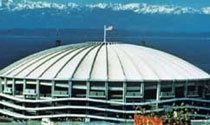 | 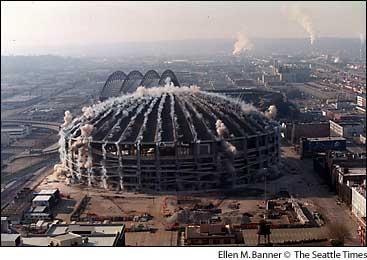 |
(a) The Seattle Kingdome. Source | (b) The Kingdome implosion starts. Source |
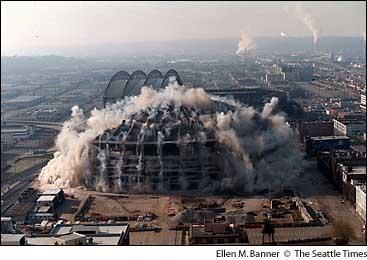 | 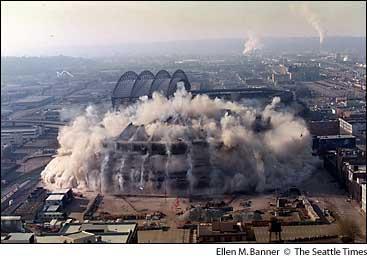 |
(c) The right and left sides are "pulled" first to fold the building inward. Source | (d) The dust expands. Source |
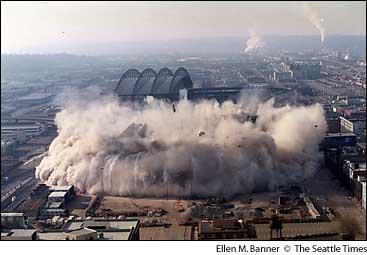 | 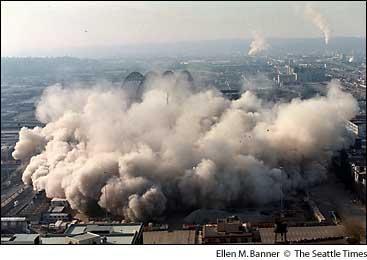 |
(e) The cylindrical wall collapses. Source | (f) The dust barely goes higher than the original height of the Kingdome. Source |
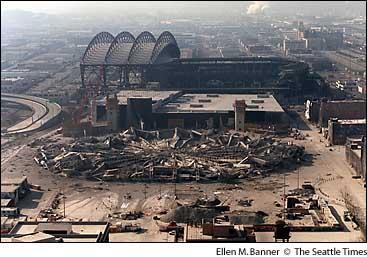 | 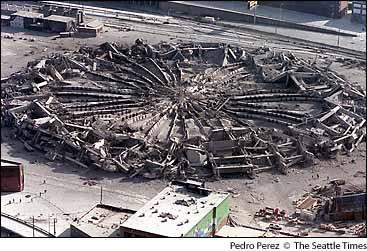 |
(g) The pile of rubble that remains includes all of the beams and concrete. Contrary to the WTC, all of the valuable furniture and fixtures had already been removed. Source | (h) The building wasn't pulverized. It was merely cut into nice size pieces to load onto trucks. Look at how tiny the people are relative to the rubble pile. Source |
| Figure 52. Here is a video of the Kingdome demolition. (mpg) (courtesy of Portland Indymedia) | |
In addition to the dramatic dustification of the WTC buildings, many windows appear they were blown out from the inside, as seen in Figures 29(a) and 29(b). But, perhaps they shattered without being blown in or out. The World Financial Center buildings (WFC) are on the west side of West Street, across from the WTC. The Winter Garden, between WFC2 and WFC3, was destroyed by steel debris. However, WFC2 suffered no structural damage to the facade, only blown windows. WFC3 suffered structural damage to the southeast corner, but no steel beams hit above approximately the 20th floor. Figure 29(b) shows exercise equipment inside WFC2 where the windows are blown/shattered.
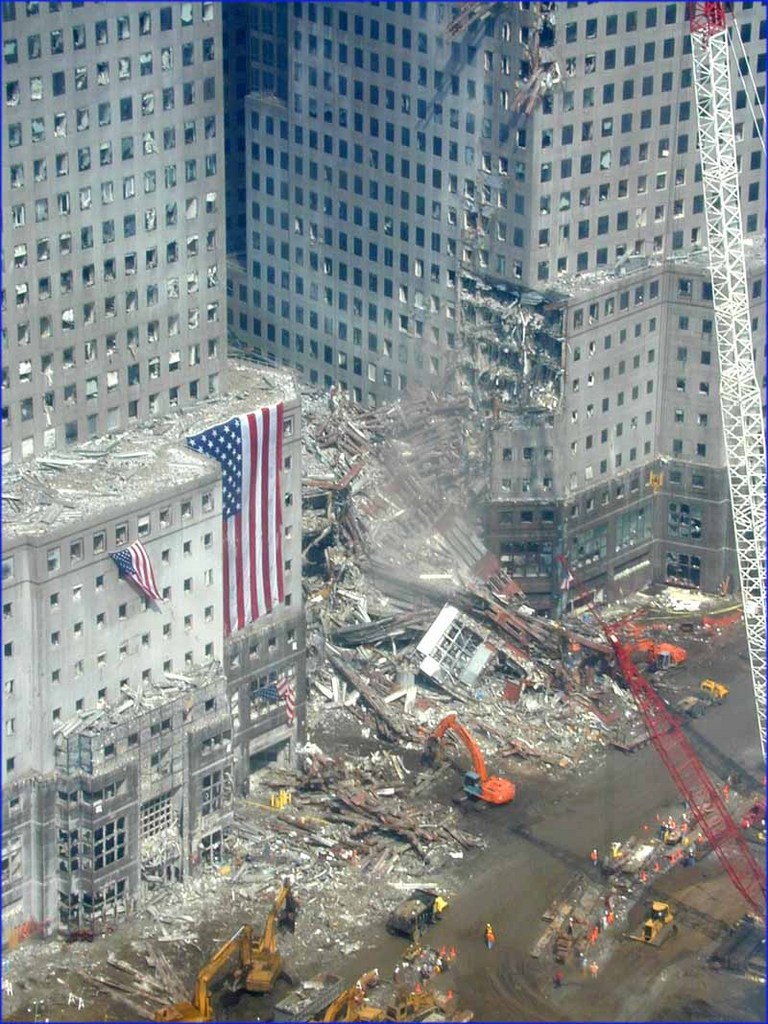 | |
| Figure 29. Note the blown out windows at the WFC. There appears to be no other damage to the façade of WFC2 on left. Source | Figure 299. (September 16, 2001) View from the WFC2 exercise room. (9/16/01) Source |


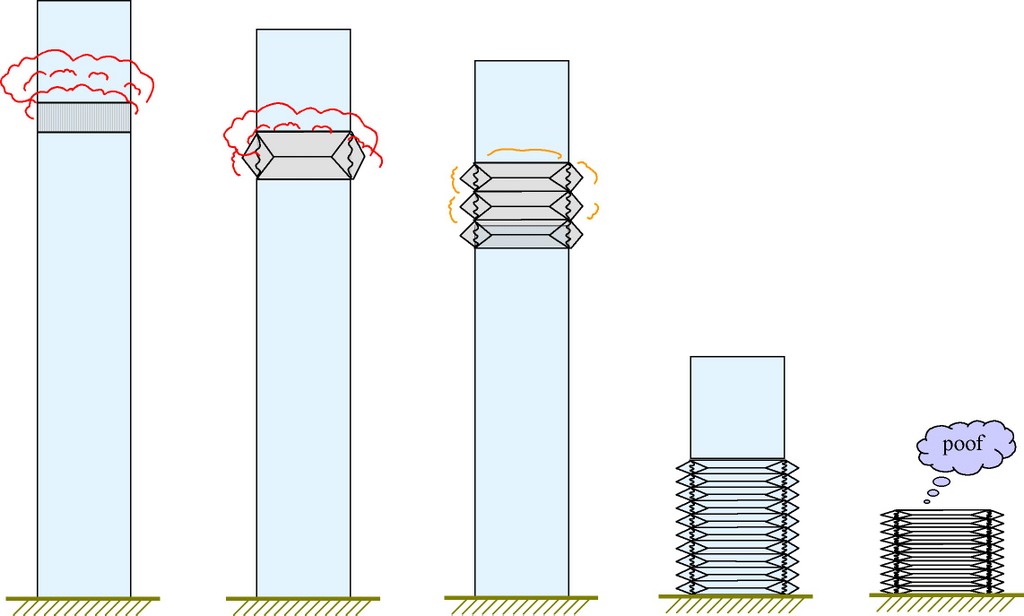
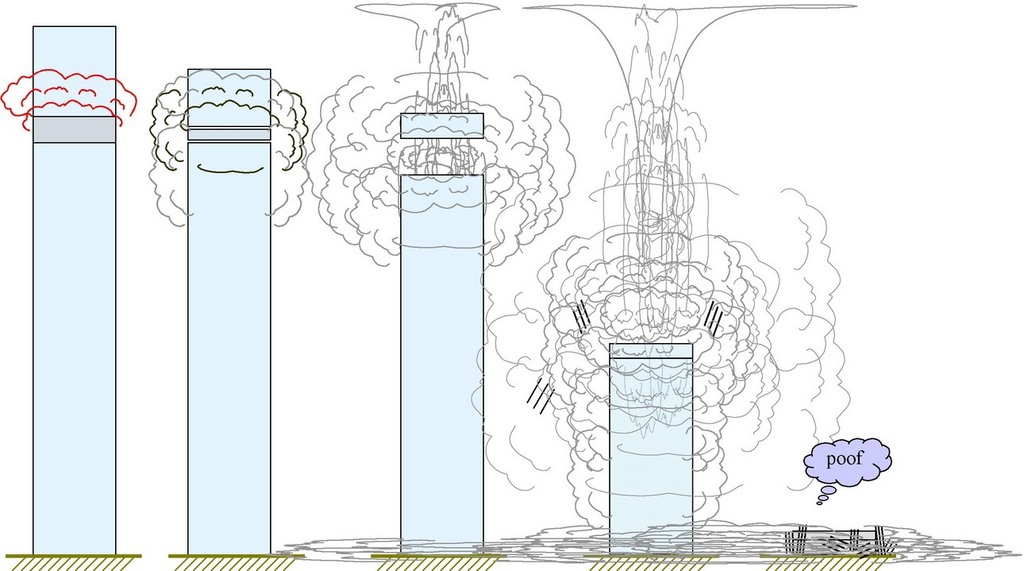
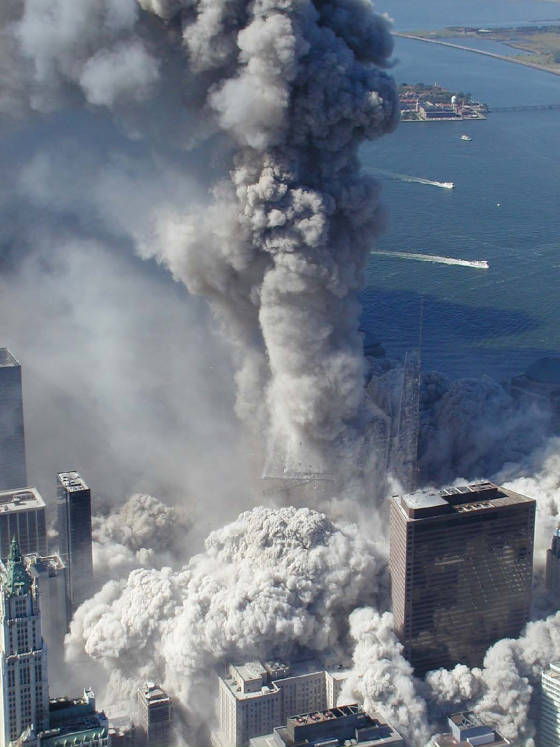
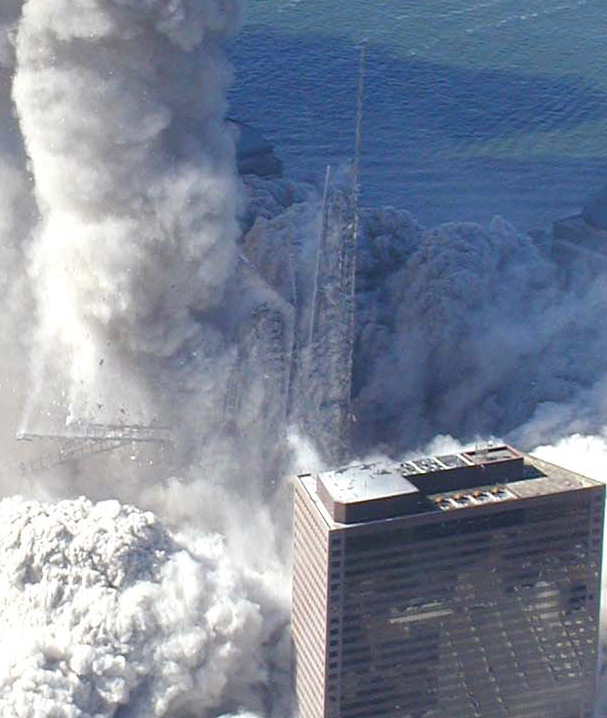
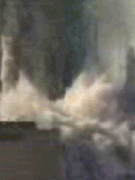
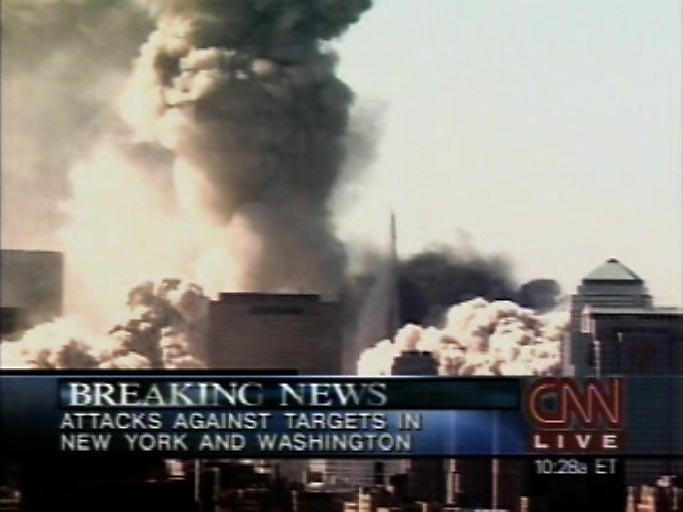
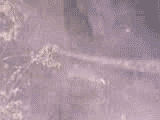

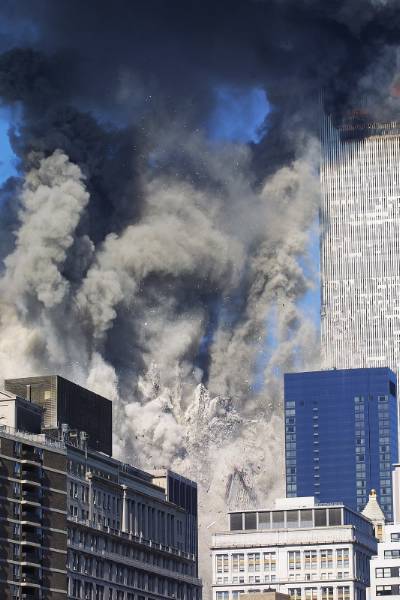
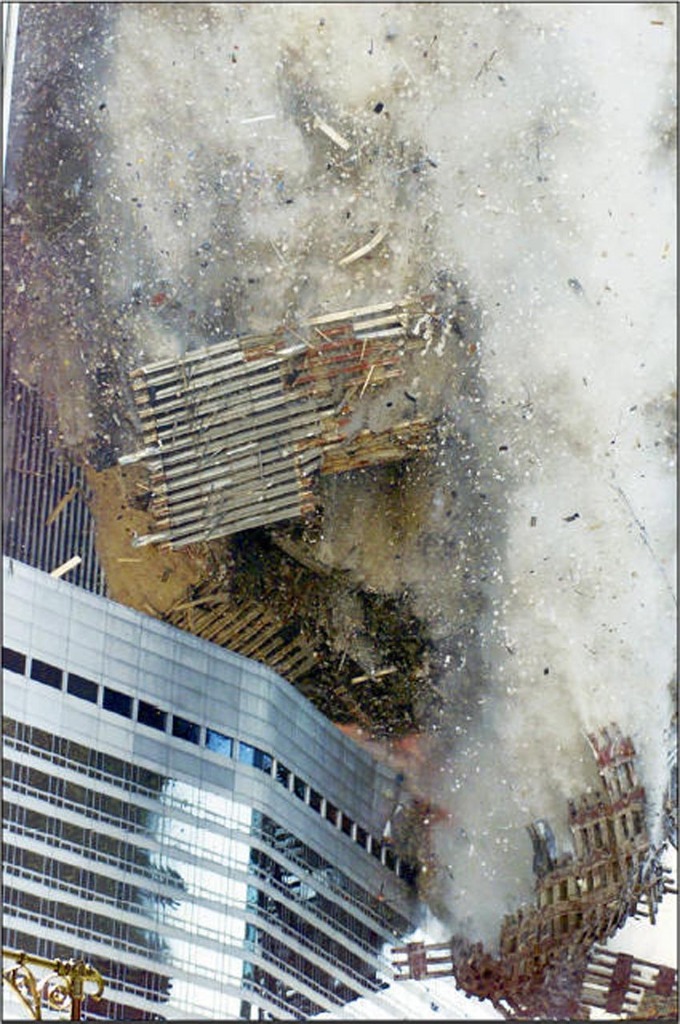
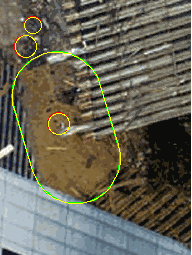
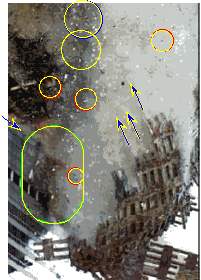
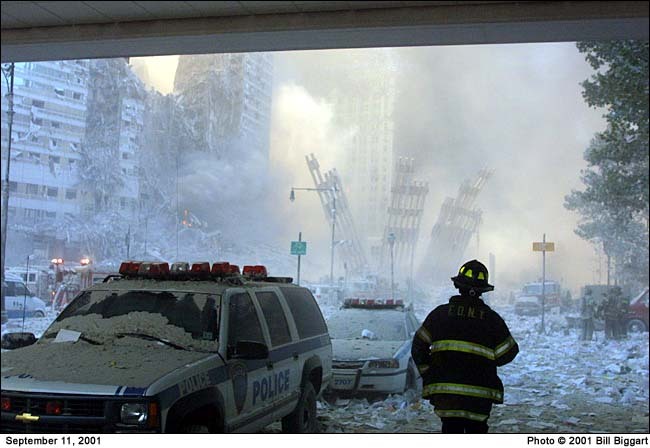
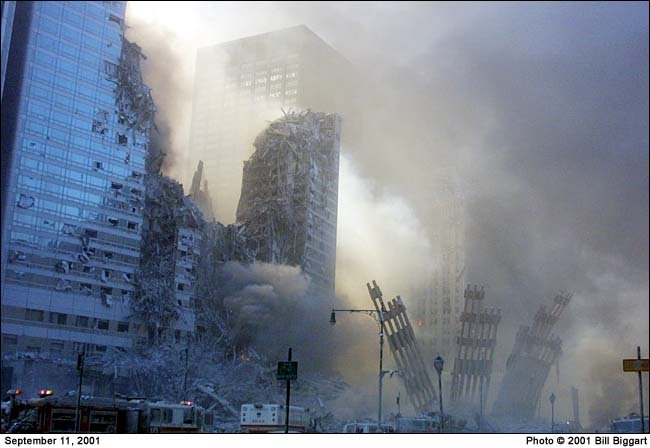
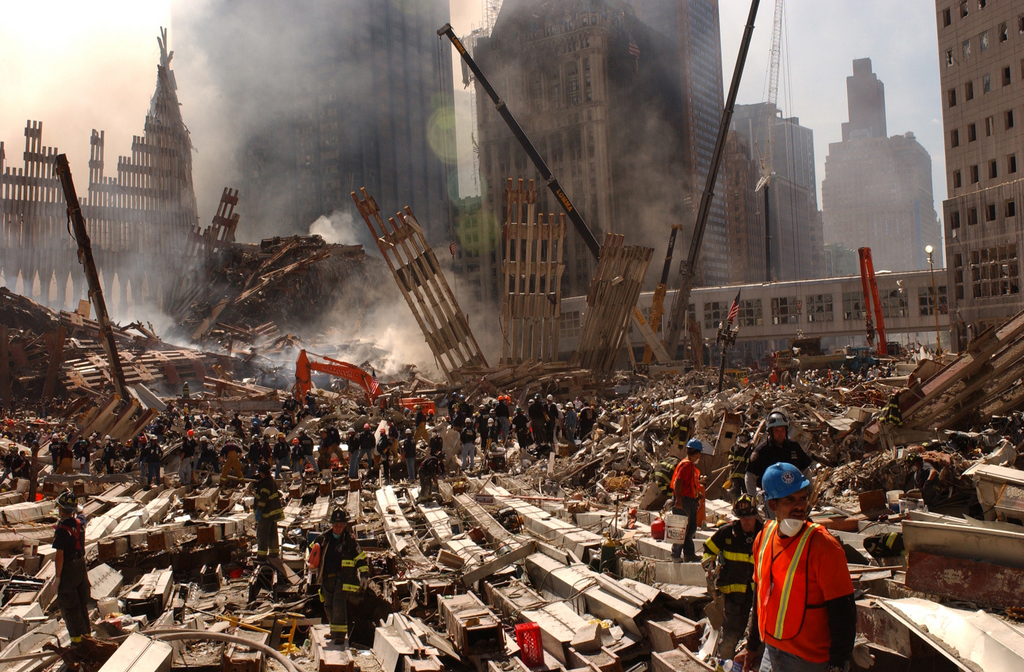
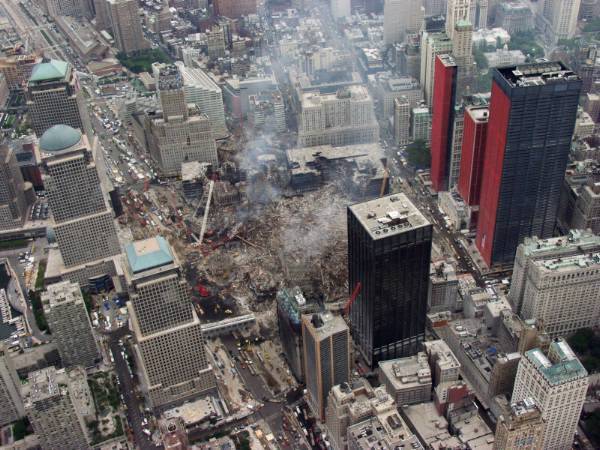
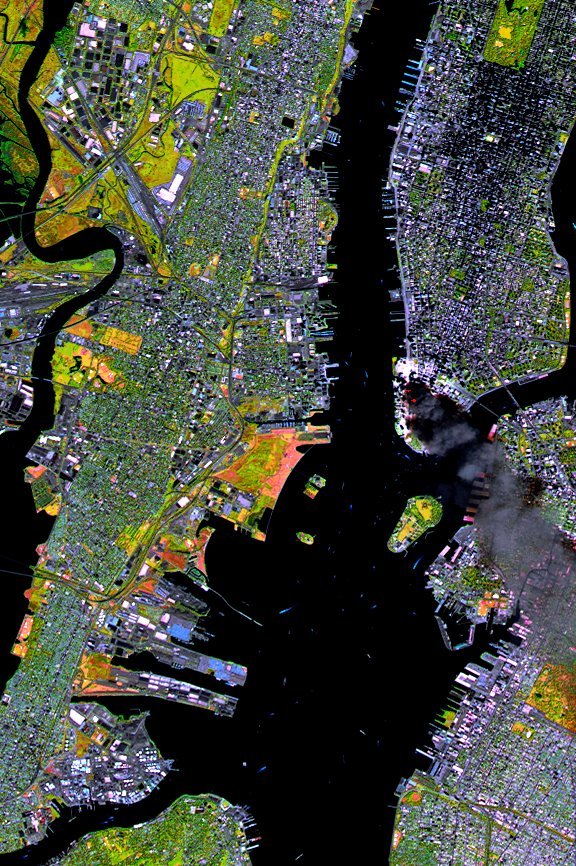
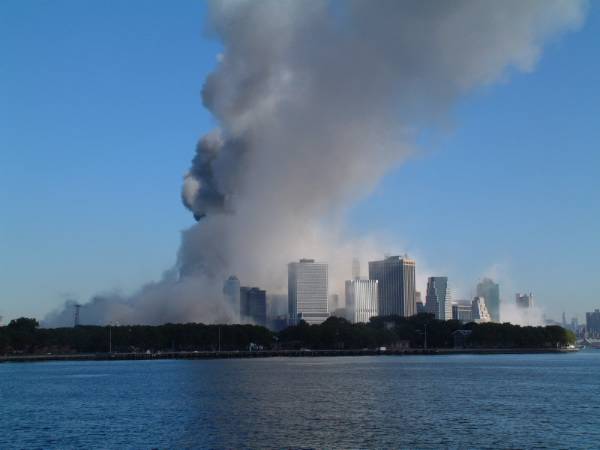
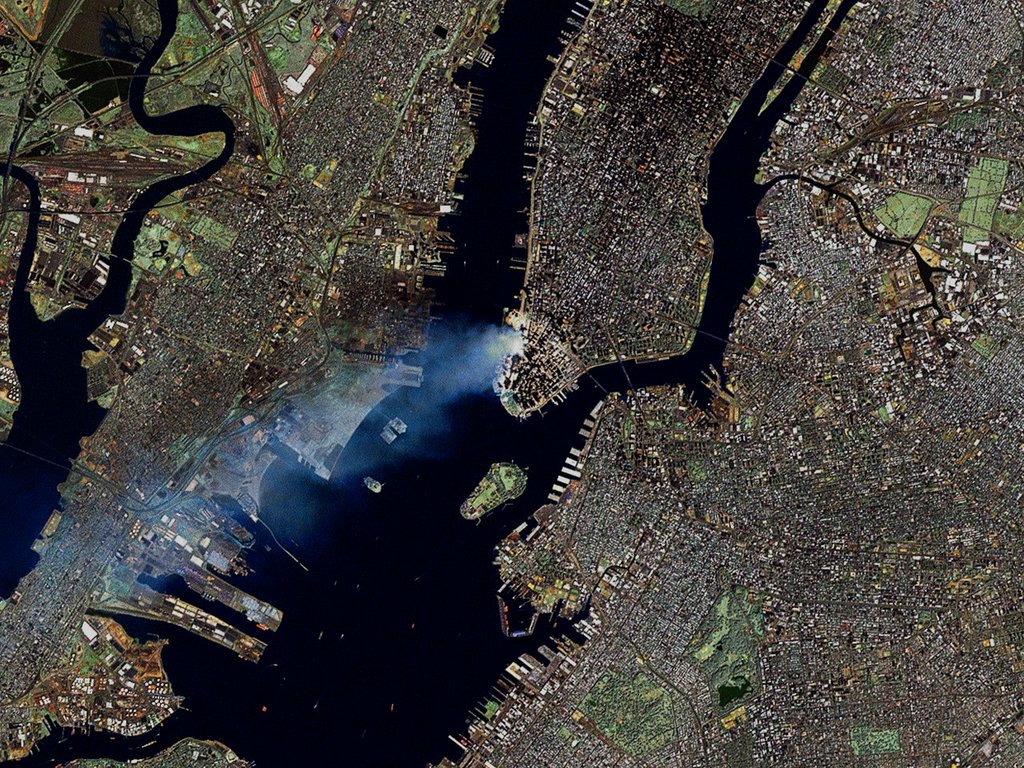
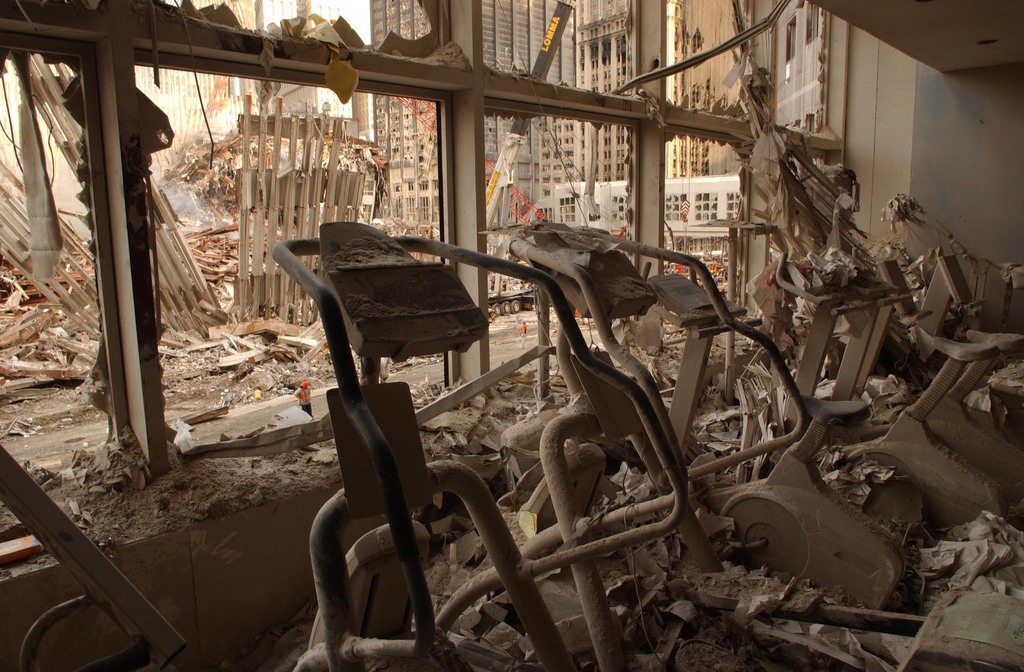
No comments:
Post a Comment